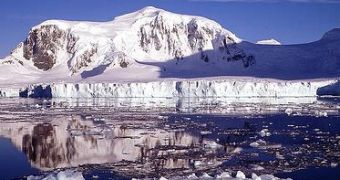A new research explains why global warming enhances the range of Southern Ocean sea ice even though western Antarctic glaciers have disintegrated.
This paradox of snow falling over the Antarctic has been explained by a very pessimistic forecast that says it will not last for long as by the end of the century, constant warming will turn all this extra snow into rain.
Climatologists Jiping Liu and Judity Curry, of the Georgia Institute of Technology, wrote in an study published August 16 in Proceedings of the National Academy of Sciences that “with increased loading of greenhouse gases in the atmosphere through the 21st century, the models show an accelerated warming in the Southern Ocean.”
In the Southern Ocean, sea ice is thin and seasonal and during the second half of the 20th century, its winter surface area has become larger.
Even though climatologists say that this expansion does not interfere with long-term projections of Antarctic melt, some skeptics needed this last study to stop contradicting forecasts.
Curry and Liu related the 20th-century warming of 36 degrees Fahrenheit in the Southern Ocean’s upper waters to high regional snowfall, after they combined temperature and precipitation records with simulations of the Southern Ocean's climate.
This ultimately makes sense as high temperatures increase the moisture in the air that eventually turns into snow, and last century, this snow prevented surface waters from heating even more, it reflected sunlight and added bulk to sea ice.
But Curry and Liu’s models show that as the Antarctic continues warming up, the snow will turn into rain that will determine snowfall to retreat to the continent's edge by the end of the century.
The southern Ocean will then be rainy at large, sea ice will contract and the melting of the continental ice will continue, rising sea levels and increasing global warming as the ice-free waters absorb solar energy.

 14 DAY TRIAL //
14 DAY TRIAL //